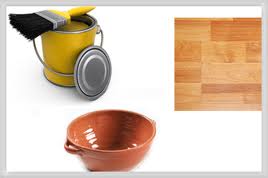Analysis on the Types of Cellulose Ethers Used in Latex Paints
Types of Cellulose Ethers
The so-called thickener, by definition is a kind of additive that can make the system maintain stable and suitable viscosity in the production, transportation, storage, construction process by increasing the viscosity of the system – types of cellulose ethers.
The cellulose is a natural polymer condensed from of β-glucose. The characteristics of hydroxyl in the glucose-based ring can be used to make cellulose generate a variety of reactions and thus produce a series of derivatives, of which the most important cellulose derivative is the cellulose ester or cellulose ether derivative produced after esterification and etherification reactions.
Common products are carboxymethylcellulose, hydroxyethyl cellulose, methyl cellulose, hydroxypropyl methylcellulose, etc. Since carboxymethyl cellulose contains sodium ions easily soluble in water, its water resistance is poor. And there are a smaller number of substituents on its main chain, so it is very susceptible to the corrosion of bacteria and then produces decomposition, reducing the viscosity of the aqueous solution and resulting in smelly solution or other phenomena. It is rarely used in latex paints, but generally used in low-grade PVA glues, paints and putty.
The dissolution rate of methyl cellulose in water is generally slightly lower than that of hydroxy ethyl cellulose. Furthermore, in the process of dissolution, there may be a small amount of insoluble matter, affecting the appearance and hand-feel of the film, so it is rarely used in the latex paints. However, the surface tension of methyl cellulose aqueous solution is slightly lower than that of other cellulose solutions, so it is a very good cellulose thickener in the putty.
Hydroxypropyl methyl cellulose is also a cellulose thickener widely used in the field of putty, and now mainly used in cement-based or gray calcium-based putty (or other inorganic binders).
Because of its good water solubility and water-holding capacity, hydroxy ethyl cellulose, compared with other celluloses, has less impact on the film performance, so it is widely used in the latex paint system. The advantages of hydroxy ethyl cellulose include high increasing pumping efficiency, good compatibility, good storage stability and excellent pH stability of viscosity; while its disadvantages are poor leveling mobility and poor spatter resistance. In order to improve these disadvantages, there has been a hydrophobically modified hydroxy ethyl cellulose (HMHEC) such as NatrosolPlus330, 331.
You may also be interested: Application of Hydroxyethyl Cellulose in Water-Based Paints

